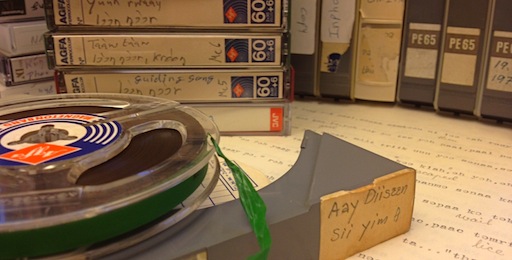About RWAAI

The Repository and Workspace for Austroasiatic Intangible Heritage serves to:
- Consolidate both legacy and newly created materials and expertise into a unique, persistent and accessible multidisciplinary resource documenting the languages and cultures of Austroasiatic-speaking communities.
- Provide a digital workspace for contributors where they can store, curate and reuse their research collections.
- Facilitate the presentation of intangible heritage collections for fellow researchers, community members, and the general public by assisting depositors in the digitisation, cataloguing and presentation of their research collections.
- Bring together an international network of Austroasiatic scholars to generate new initiatives in the evolving field of eScience.
- Provide capacity building in MSEA to promote the documentation of intangible heritage, and sustainable archiving technology and data management.
RWAAI provides long-term storage and all materials are digitised, stored, and catalogued according to recognised best practice. All collections will remain the intellectual property of the individual depositor or a designated delegate/s. The sub-corpora in the repository are named after the depositor, unless the depositor indicates otherwise. All contributors and users of the RWAAI resource must adhere to the access condition outlined in the registration form, and any use of data by a third party will require appropriate acknowledgement to RWAAI and the depositor.
The acronym RWAAI is an adaptation of the proto-Austroasiatic form *rwaay. It is reconstructed in many branches of the family and means ‘soul’, or the conceptually related ‘tiger-spirit’ or ‘tiger’. For example, in the Aslian branch there is Temiar /rwaay/ ‘headsoul’, and Ceq Wong /lwɑy/ and Semaq Beri /rway/ both meaning ‘soul’. In the Khmuic branch there is Mlabri /rwaay/ ‘tiger’, and in the Palaungic language Lamet /rəwa̤a̤y/ also means ‘tiger’.

